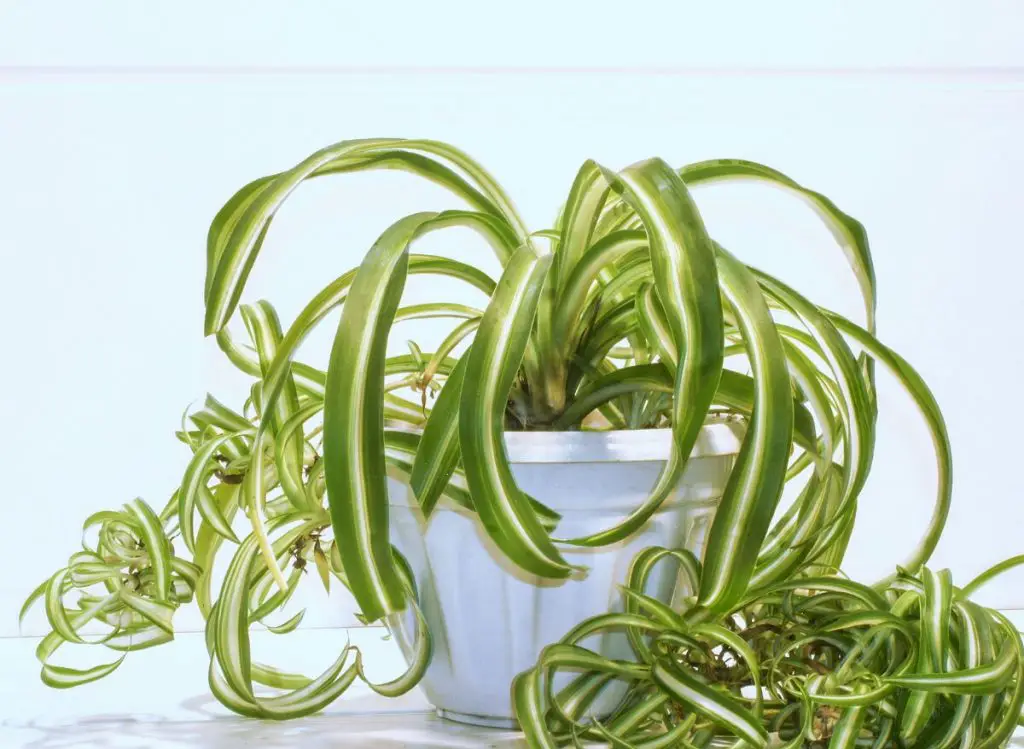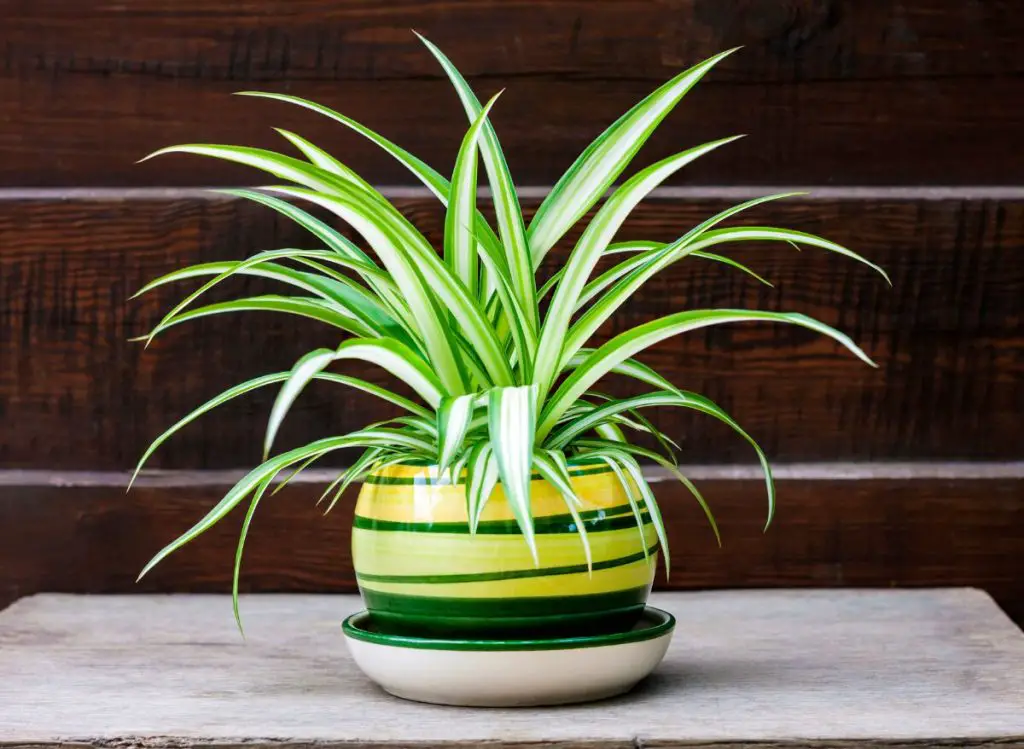Spider plants fall under the category of the most planted plants worldwide. This is due to this plant’s unique features, attractive look, and advantages. Along with outdoor planting, these plants are also an ideal choice to plant inside your office or living room to purify the air. The bushier they are, the better. But how to make spider plant bushier?
As a general rule, making your spider plant bushier requires meeting all of its care requirements and pruning and repotting it as soon as needed. In addition, spider plants are highly effective in cleaning indoor air by cleaning and absorbing chemicals like carbon monoxide, formaldehyde, benzene, and xylene in your offices or homes, showed studies.
If you plant your spider plants in the early springs and look after them properly, they will grow very bushier as it increases the beauty of these plants. Read on to find out how to make your spider plants bushier.
See also: The Reasons Why The Tips of Your Spider Plant Turning Brown (Here’s how to fix it!).

Spider Plant Requirements
The spider plant, also known as Chlorophytum comosum, is among the most popular houseplants. And there is a reason for its popularity. Generally, a spider plant is particularly popular for the speed and ease with which it propagates.
To make spider plant bushier, you will need to replicate its needs. The table below contains the main characteristics of a spider plant.
| Common Names | Spider ivy, spider plant, or ribbon plant |
| Botanical Name | Chlorophytum comosum |
| Plant Type | – Perennial – Herbaceous |
| Sun Exposure | – Generally, spider plants grow healthy with bright indirect light. – They can also tolerate some direct sunlight. – Spider plant grows bushier when it receives light for 12 hours per day. |
| Ideal Temperature | – During the day, spider plants thrive in temperatures between 65 and 90°F – At night, about 50 to 55 °F – Spider plants will handle temperatures as low as 35°F without damage. Still, your plants will not grow much at temperatures below 65°F, according to the University of Florida, Institute of Food and Agricultural Sciences. |
| Soil pH For Spider Plants | 6.0 to 6.5 |
| Bloom Time | – At least three weeks – Generally, the flowering period indoors may happen in spring or summer. |
| The Ideal Soil For Making a Spider Plant Bushier | The ideal soil for making a spider plant bushier is loamy, well-drained, and moist. |
| Spider Plants Requirements | – Even though it doesn’t require fertilizer, proper fertilization of spider plants is essential – To increase your chance of making your spider plant bushier, use a 3-1-2 ratio fertilizer. |
| Spider Plants Flower Color | White |
| USDA Hardiness Zones | 9 to 11 |
What Can Make My Spider Plant Bushier?
If you’re noticing that your spider plants are not growing according to your expectations, you can make them thick and bushier by following a few tips.
Here are some tips to make spider plants bushier.
1- Proper Pruning and Trimming
The foremost thing that adult spider plants will need to grow effectively is their proper trimming and pruning. This will help them grow faster and wider which will make them thick. The new bushes will grow thick.
However, dirty scissors will ruin the beauty of the plants instead of increasing their beauty. So, make sure that you have sterilized your scissors well before you start pruning.
See also: Must-Have Gardening Tools To Start A Thriving Garden.
2- Separate the Base of Mother and Baby Plant
If you notice a little baby spider plant growing, congratulations to you. You are about to become a spider plant grandma or grandpa. But you need to act fast because the baby requires special attention right away. Without proper per care, baby spider plants will not survive.
And when spider plants turn into new baby plants their stems might be buried under the ground. If you notice such plants while trimming, separate these plants. They will grow separately to fill the gaps in between.
3- New Baby Plants
If you consider that you have planted the spider plants at a larger distance than the required one, you can consider planting new baby plants in the gaps.
Also, if any disease causes damage to the plants that results in fewer bushier plants, you can plant new baby plants in this case too. This will make them thicker and more appealing.
To make them flourish well and thrive you will need to replicate growing conditions that replicate and meet their basic needs. Here is how to look after these plants effectively.
- Proper Growing Media
Best growing media for making your spider plants bushier include those with excellent aeration and water holding capacities. One of the reasons, spider plants are popular is because they tolerate broad changes in media, fertilization, light, and temperature without damage.
The followings media are ideal:
- Prepared artificial mixes
- Combinations of peat (at least 50%) and pine bark vermiculite, styrofoam beads, and perlite.
- Proper Watering
Spider plants are very sensitive plants that need great care and attention. Water stress may result in fewer bushier and small plants. So, make sure that you water them properly after regular intervals.
Watering once a week is enough in normal weather conditions. In winters, check the soil of the plants before watering. If the soil is dry from the top, about 1 inch, re-water them.
- Proper Temperature and Humidity
Proper temperature and humidity also make the spider plants bushier. These plants need partial sun and a partially shady place to do their best. So, keep the temperature between 65°F and 90°F. Temperatures below 65 or above 90 will not let these plants grow well.
Spider plants can tolerate temperatures as low as 35°F without damage. But, your plants will not grow much, which means they won’t become bushier at temperatures below 65°F, according to the University of Florida, Institute of Food and Agricultural Sciences.
They also need proper humidity for proper growth. So, make sure that the air containing these plants is humid enough to grow them.
- Propagation
Whenever you see that the plants have grown large enough, separate them. This will result in new baby plants and spideretters that will grow to make them thick.
- Other Tips
Besides the above-mentioned tips, follow these tips too for effective growth of the spider plants.
- Repotting
- In time pruning and cutting
- Proper sunlight
- Moisture in the soil
- Proper container that allows proper drainage
See also: 9 Indoor Low Light Succulents That Grow Well In Dark Room.

What Causes Spider Plants to Grow Slowly?
Generally, one of the main reasons spider plants stop growing is a lack of nutrients. If your spider plant has been in the same pot for years, then the roots can deplete the soil of nutrients, which contributes to slowing down the growth of your spider plants in the Summer and Spring months.
In addition, other factors may contribute to the poor growth of spider plants.
If your plants are also struggling, check out whether your plant is suffering any of the following symptoms:
1- Growing Season
Spider plants are not identical to the rest of the plant species in case of growth. In their growing season, they produce pups that, in turn, result in new plants. Their growing season is from February to the end of March.
If your plants are featuring low growth, check out the time, whether it’s their growth time or not. If your plants are not doing well out of their growing season, don’t worry, they will grow effectively once their growth season starts.
2- Improper Watering
As mentioned we discussed, that spider plants are sensitive plants that need to be watered properly. Any form of stress, over or underwater, will result in poor growth or diseases in some cases.
So, make sure that you water them properly to make them grow well and bushier.
3- The Containing Medium
The medium containing the plants, and soil, also contributes a lot to the growth of the plants. A well-drained pot will be an ideal choice for spider plants.
However, if your plants are not getting too bushier, check out the soil. If the soil doesn’t feature proper drainage or aeration, you can consider repotting them in new soil. This will help them grow well.
4- Inadequate Light
Intense sunlight or low sunlight, both kill the spider plants or may affect their growth. These are the kind of plants that don’t bear intense sunlight nor do they do well in lowlight conditions.
So, plant them in a place that is partially sunny and partially shady.
5- Inappropriate Temperature
The maximum temperature that spider plants can bear is 90°F while the lowest is 35°F. Below or above this temperature, these plants will not do well.
A reason for the inappropriate growth of spider plants may be poor temperature control mechanisms.
Can You Save a Dead Spider Plant?
Whether you grow your spider plants indoors or outdoors in U.S. Department of Agriculture plant hardiness zones 9 through 11, spider plant requires perfect for thriving. In addition, you can rejuvenate your plants by giving them the proper conditions it needs for growth.
If the reason for the spider plant’s poor growth is not a severe bacterial disease, you can restore it by following some preventive measurements. However, if the plant is dying due to bacterial disease, it is better to remove it and build it outside the garden.
Tips For Keeping Your Spider Plants Healthy And Thriving:
- Avoid inconsistent watering.
- Give your plants enough water.
- Avoid exposing them to too much direct sunlight.
- Flush the soil in the ground or a pot every three to four months to avoid salts buildup in the soil
- Use distilled water to prevent too much fluoride in the water.
See also: Top 10 Amazing Succulent Plants Benefits.
Wrapping Up
The best way to make spider plants bushier or revive them is to recreate their ideal growing conditions. However, sometimes, they can’t grow well, which results in less bushy plants.
You can restore the thickness and bushy look of these plants by following the above-mentioned tips.


